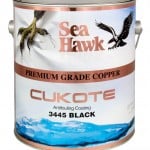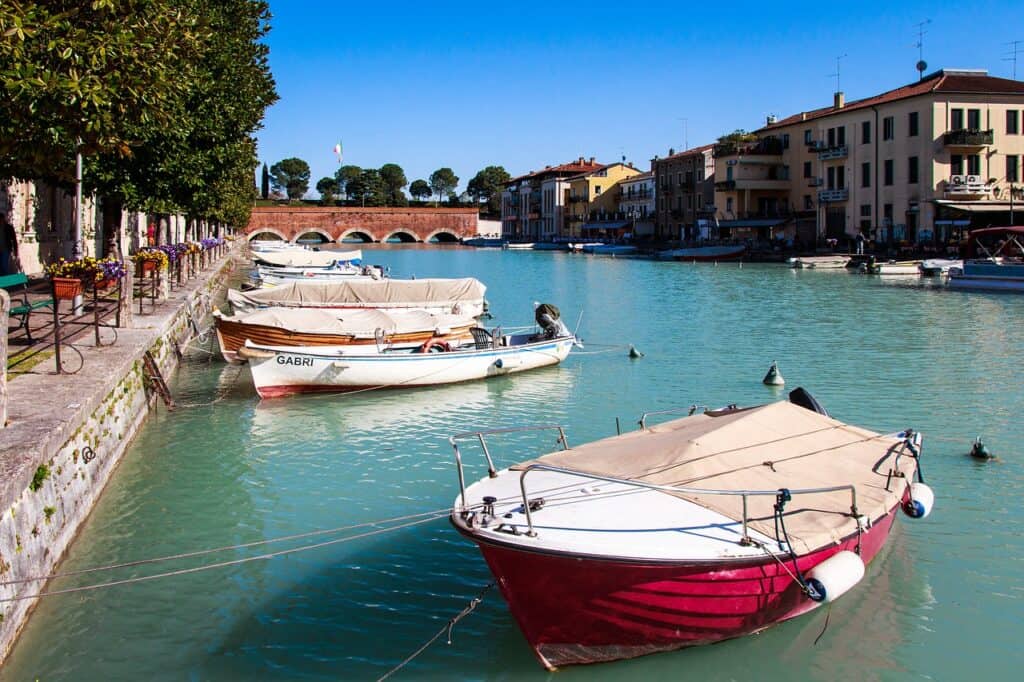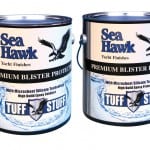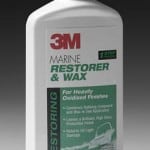 Most of the time when bottom paint is considered on a boat it is Antifouling paint. Bottom paint blocks growth of organisms that attach to the hull and can impact a vessels speed, performance, and durability when the boat is stored in water for extended periods of time. Antifouling bottom paint usually has a flat, dull finish that is used below the waterline. If you don’t have this challenge, you may not need bottom paint.
Most of the time when bottom paint is considered on a boat it is Antifouling paint. Bottom paint blocks growth of organisms that attach to the hull and can impact a vessels speed, performance, and durability when the boat is stored in water for extended periods of time. Antifouling bottom paint usually has a flat, dull finish that is used below the waterline. If you don’t have this challenge, you may not need bottom paint.
If you don’t have a growth problem or would like a nice shine to your boat’s bottom look to our other items like gelcoat or a topside paint for moderate water exposure or an aluminum paint with no antifouling agents. Gelcoat adheres to most gelcoats or fiberglass/resins, see how to apply gelcoat. A boat bottom with antifouling will need to have it removed via sanding, sandblasting or bottom paint remover before a different type of paint will adhere.
There are generally two types of bottom paint both of which have several variations that create a multitude of products in the market place. The two different types or categories of bottom paint include hard bottom paint and ablative bottom paint.
Hard Bottom Paint vs. Ablative Bottom Paint
Hard bottom paint is bottom paint that is a hard modified epoxy. After you apply hard bottom paint it is very durable and does not wear off. Hard bottom paints typically have a higher ratio of pesticides (usually copper) in them that are exposed in the outer surface of the bottom paint coating. As time goes by, the coating oxidizes and becomes less effective in combating marine growth. Hard bottom paint is generally used on boats when the boat sits for long periods of time without moving at all, or there is little movement of water (current/ tide) around the boat. You should not use a hard paint if you boat comes out of the water such as on a trailer or a lift. After 72 hours, the hard bottom paint will oxidize on the outer surface from the air and becomes ineffective. If you are trailering your boat, or keep it on a lift you should always use ablative bottom paint.
Ablative bottom paint, also known as self- polishing bottom paint, is softer and allows the coating to wear off at a controlled rate. Much like a bar of soap, once the boat moves in the water or there is a current and or tide, the outer layer slowly wears away. The wearing away of the self-polishing bottom paint allows for new, unoxidized paint to be exposed. Therefore, if you are trailering your boat, or it comes in and out of the water for any reason, the paint will oxidize within 72 hours. However, once placed back in service, that oxidized ablative paint wears away and exposes a new fresh outer coating with active protection. Ablative bottom paint is a newer technology then hard paint. It is the preferred bottom paint of most users since it typically lasts longer and continuously exposes a new active outer coating that protects against marine growth.
How long does bottom paint last on a boat?
In general, you should apply boat bottom paint once a year, however; some bottom paints can last for two years. If your boat is kept in the water or you use it regularly, you you have it checked annually to determine if it requires a new bottom paint coating.
For more how to use details see How to apply bottom paint to bare fiberglass or How to apply bottom paint over existing bottom paint.
How much does it cost to bottom paint a boat?

The cost to paint the bottom of your boat depends on a number of factors including the size of your boat, the paint you choose and whether you use a primer or not. Other factors include whether you will paint your boat or hire someone to paint it. For example, Biocop TF by Sea Hawk, is a popular bottom paint and currently costs $275.77 a gallon and provides theoretical coverage of 315 square feet per gallon. If the bottom surface of your boat is 700 square feet you would theoretically need to purchase three gallons (Biocop is not offered in quarts) at a total cost of $827. 31 for the three gallons.
That may seem expensive for paint, however boat bottom paint uses antifouling properties in order to protect the boat’s bottom from organisms found in saltwater and other elements.
For information on calculating how much paint you need to paint your boat bottom you can refer to our Bottom Paint Calculator.


